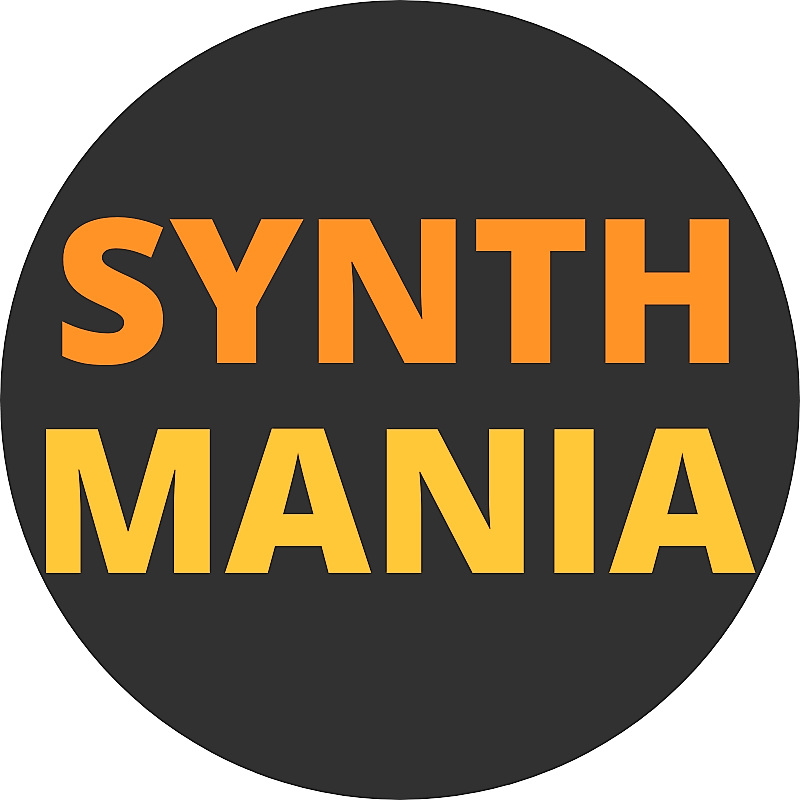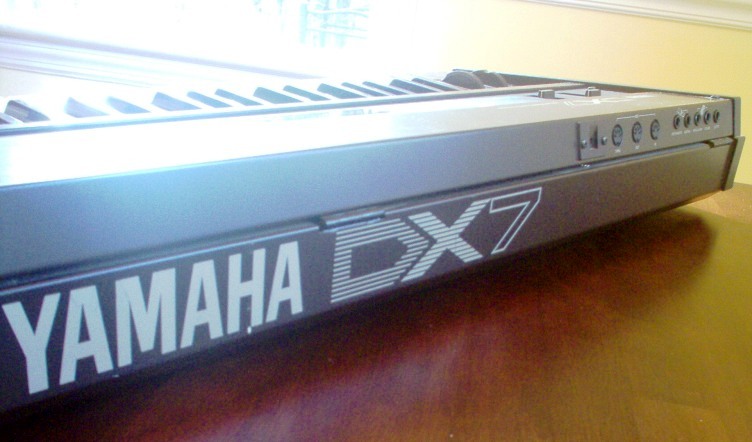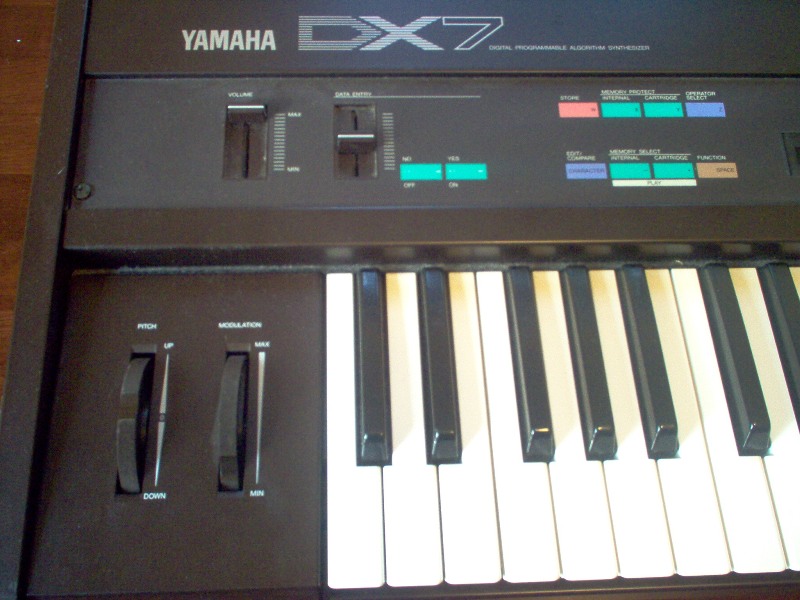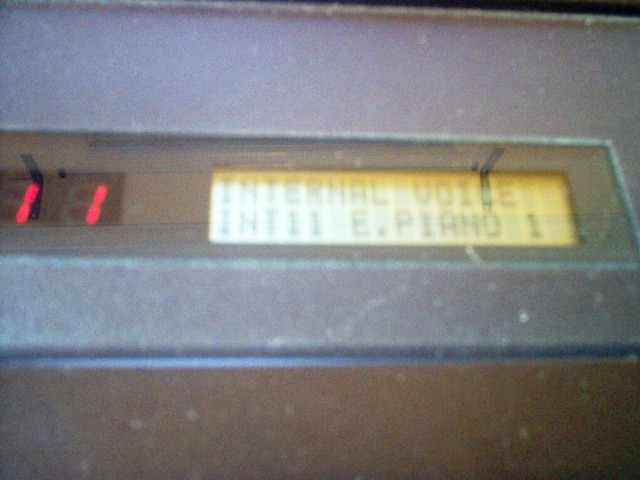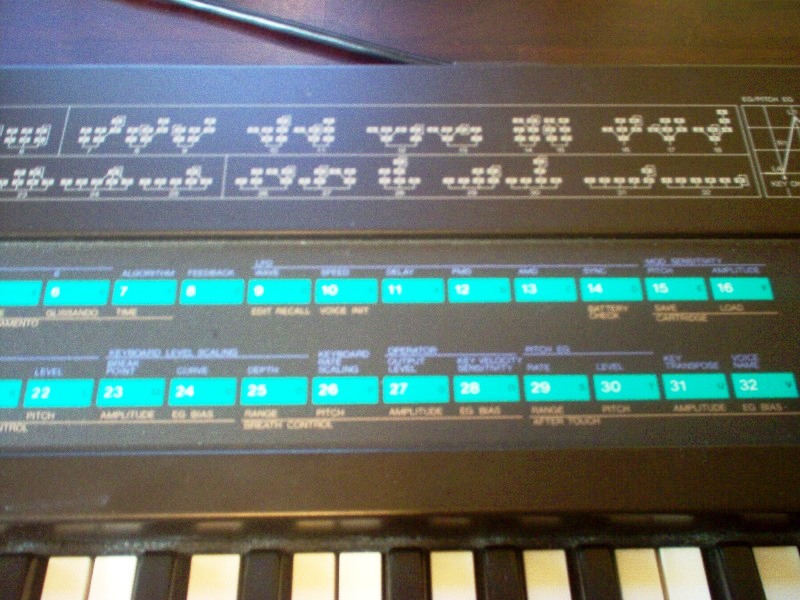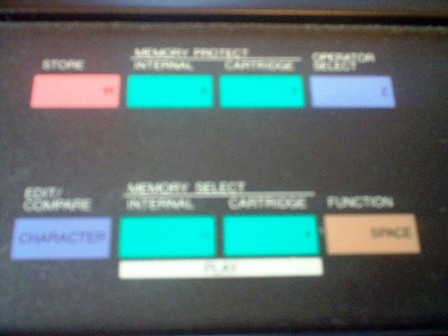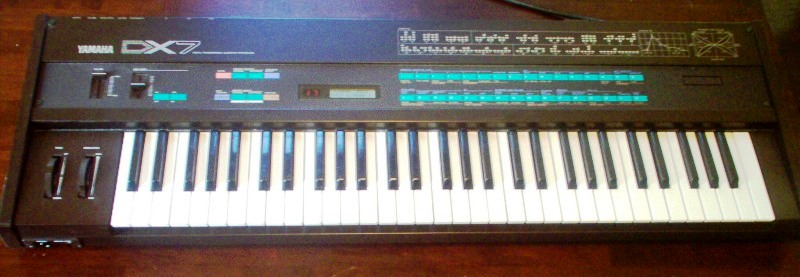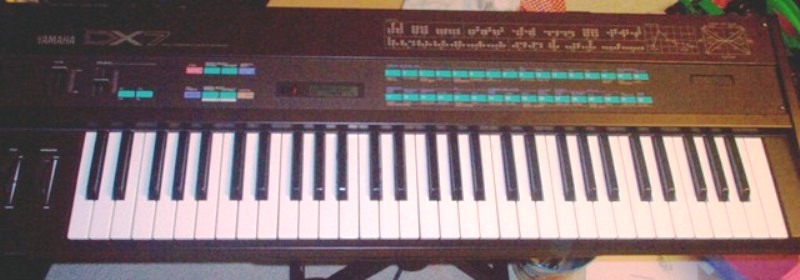Digital programmable algorithm synthesizer

The most famous synthesizer of the 1980s.
Its electric piano became a standard sound in ballads and “smooth jazz” genres. Its bass was the standard bass sound, typically played in bouncy octaves. Its crystalline timbres were such a departure from the world of analog, that this synth was a super-hit for Yamaha in 1983, and spanned a long family of FM-based products.
The DX7 came out in 1983, sporting the new MIDI interface. The high quality of its digital sounds, velocity + aftertouch, the expandability, the thoroughly professional look, and the complicated programming interface, made the DX7 and FM synthesis take off in a way the was unknown before for synthesizers. Thousands of units were sold, and thousands of records have that distinct DX7 sound (especially for the electric piano, the bass, marimba and glassy, crystal-type sounds).
The DX7 was also the first synth that originated a huge “patch creation” business. Since it was cumbersome to edit, many programming houses were established, ready to feed the hunger for new sounds that players all over the world craved. Today, there are literally thousands of sounds available for the DX7.
Bottom line: together with D-50 and M1, the synthesizer of the ’80s
Yamaha DX7 audio demos
Factory internal presets (ROM-1 A MASTER GROUP)
ROM 1-B KEYBOARD AND PLUCKED SOUNDS GROUP
ROM 2-A ORCHESTRAL & PERCUSSIVE SOUNDS GROUP
ROM 2-B SYNTH, COMPLEX & EFFECTS SOUNDS GROUP
ROM 3-A MASTER GROUP
ROM 3-B KEYBOARD & PLUCKED SOUNDS GROUP
ROM 4-A ORCHESTRAL & PERCUSSIVE SOUNDS GROUP
ROM 4-B COMPLEX SOUND & EFFECTS GROUP
Yamaha DX7 photos
Yamaha DX7 patches
Don’t forget to press FUNCTION (SPACE) and then Nr. 8 to switch from UNAVAIL to AVAIL when loading patches from your sequencer, or the DX7 won’t receive the MIDI sysex.
Yamaha DX7 manuals
Yamaha DX7 specs
- trademark FM digital sound;
- velocity and aftertouch make this keyboard very expressive;
- hundreds (even thousands) of sounds available on the Internet;
- still a workhorse after 20+ years
| Year of release | 1983 |
| Polyphony | 16 |
| Sound generation method | FM |
| Preset memories | 32 + expandable via cartridges |
| MIDI | in, out, thru |
| Sound expansion capabilities | cartridges |
| Sequencer | no |
| Arpeggiator | no |
| Effects | no |
| Velocity | yes |
| Aftertouch | yes |
| Accessories | ROM cartridge x 2 (64 voices x 2); music stand |
| Dimensions | 101.8cm (W) x 10.2cm (H) x 32.9cm (D) (40″ x 4″ x 13″) |
| Weight | 14.2 kg (31.2 lbs) |
Yamaha DX7 links
